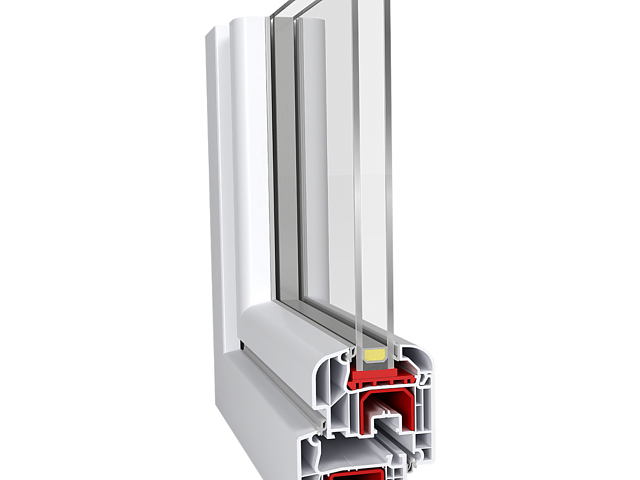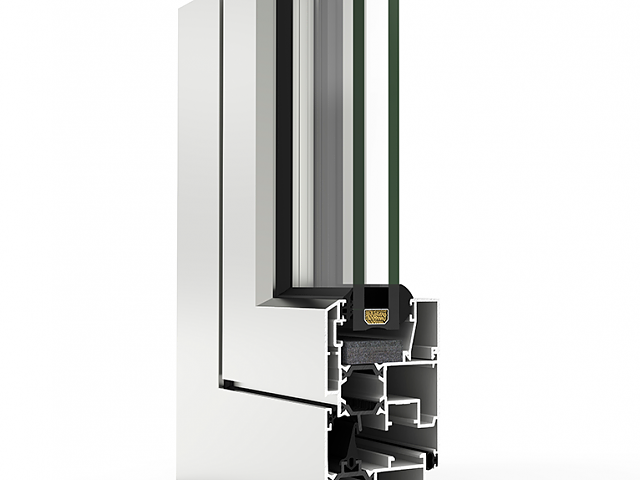What types of windows exist?
MATERIAL, TYPES AND PROPERTIES
What types of windows are there and what should be considered when buying? We have the answer to these questions!
Windows are the eyes of houses, says a quote from the French writer Jules Amédée Barbey d’Aurevilly. And as diverse as our eyes are, there are also many different windows. We want to help you find the right one for your home and give you an initial overview with our small window expert. Basically, windows can be differentiated according to their place of installation, their shape, their material and their function. In addition, there are also subdivisions in terms of decorative and structural elements.
WINDOW TYPES INSTALLATION LOCATION
A house is essentially divided into three zones: the roof area, the vertical façade area, and the basement or cellar area. Each of these installation locations has different demands on a window. For example, a skylight installed at an angle or even horizontally must meet higher requirements in terms of water and wind tightness as well as sun protection, while a façade window contributes to greater ventilation comfort through combined opening options . A basement window, on the other hand, places high demands on protection against burglary and burglary, and is often permanently glazed and without an opening mechanism.
There are also special forms of windows for special installation locations: windows with satin glass are occasionally used in bathrooms if you want to do without curtains or blinds in the bathroom. In summer houses, depending on the use, sometimes simple glazing is chosen if the gazebo is only used temporarily.
WINDOW SHAPES
In addition to the classic, rectangular or square window, there are now a host of other shapes that can make sense depending on the location and purpose of the installation. Modern manufacturing processes allow us to use virtually every conceivable window shape, as well as precision laser cut round and curved glass. Triangular or trapezoidal windows are often installed in the roof and gable area, also for architectural reasons.
A combination of the classic rectangular and round window is the round arch window, made of one frame, or the segment arch window, which consists of two frames. In the past, these were often only used in very splendid palaces or churches, as the production was complex and expensive. Current technology allows economical production also for private households.
Another special form of windows are prefabricated frame elements with more than one window pane: two, three or more pane windows are easily possible with today's modern frame technology thanks to material combinations and sandwich technology.
The box window has a great tradition. In the days of simple glazing, this window, consisting of two separate windows with an air gap in between, was very popular for better thermal protection. With the advent of insulating glazing, they almost completely disappeared from the market in the 1972s, but now they are enjoying great popularity again thanks to their excellent biological building properties, and especially of course in older, protected buildings.
Lattice windows are a popular variant, especially for old houses, but also for houses in the so-called "country house style". In addition to relatively expensive actual lattice windows, where each lattice frame has its own small-scale glazing, there are also front lattice frames or even internal lattice bars that are inexpensive and easy to clean: instead of many small panels, only one large sheet needs to be thoroughly cleaned.
TYPES OF WINDOWS OPENING
While the classical window knew essentially three principles of opening, namely: revolving sashes, hanging windows (for small skylights or basement windows), as well as the vertical sliding window, which is particularly popular in the English-speaking world, thanks to Today's modern hardware technology, many types of window openings have become possible, often they can even be combined into one window sash:
- Rotate the sash (the window opens horizontally to the right or left)
- Frame hung at the bottom (the window can be tilted vertically)
- Tilting hardware (combination of the first two leaves)
- Top hanging frame (can be folded vertically, common with simple room side windows)
- Sliding blade (horizontal, mainly in connection with lifting accessories)
- Rotating sash (the window swings vertically around the central axis)
- Reversible sash (the window rotates horizontally around the central axis)
The last two variants appeared in the 1960s with large-area glazing, but they are hardly used today, as modern triple glazing is problematic for this type of hardware due to the high sheet weights. Furthermore, the currently prescribed insulation values cannot be achieved.
GLASS
The essential properties of the window and frame structure depend on the glazing.
In the ceiling area, protection against climatic influences is primarily important: too strong sunlight, which causes both discoloration of furniture and decorations and extreme heating of rooms, should be avoided. Therefore, skylights are generally equipped with reflective solar control glass and / or combined with external or built-in blinds or roller blinds.
In the façade area, thermal insulation and soundproofing predominate: optimized thermal insulation is achieved to avoid heat loss in winter by means of glazed surfaces covered in the interior and / or gas filling between the windows. Greater protection against noise in facades on busy streets is achieved by combining different thicknesses of glass, layers of decoupling film and a special gas filler.
In the basement area, safety glass or wire is often used for added burglary protection.
Special forms of glazing, such as satin, opaque or colored, and old lead glazing, should not be overlooked.
WINDOW MATERIALS
Until the 1960s there were only two materials for window frames: wood and iron. The use of iron was practically reserved exclusively for later churches or industrial buildings. With the development of building technology, aluminum and plastic were added around 1960. Although the first window frames made from these new materials still had disadvantages such as reduced stiffness and poor thermal insulation, today they are they use combinations of materials and frame constructions that guarantee a long service life and the best insulation values.
Today's plastic windows offer perfect thermal insulation and soundproofing, they are easy to care for, since they do not require maintenance or painting, and this at a particularly low price. Thanks to the colored decorations, they are also adapted to individual design requirements.
Our aluminum or PVC windows for demanding builders are ideal for the most modern architecture and guarantee you excellent weather resistance and safety thanks to the aluminum cladding.
Whichever window material you choose, with us you are assured of buying high-quality and completely maintenance-free windows that guarantee a long service life, the best thermal insulation and soundproofing in accordance with the latest standards.
We look forward to providing you with detailed advice on your renovation or new construction project. Contact us, we will be happy to visit your project on the site and prepare a cost estimate without obligation. You will see that superior quality does not have to be expensive. Our windows have an excellent price / performance ratio!









